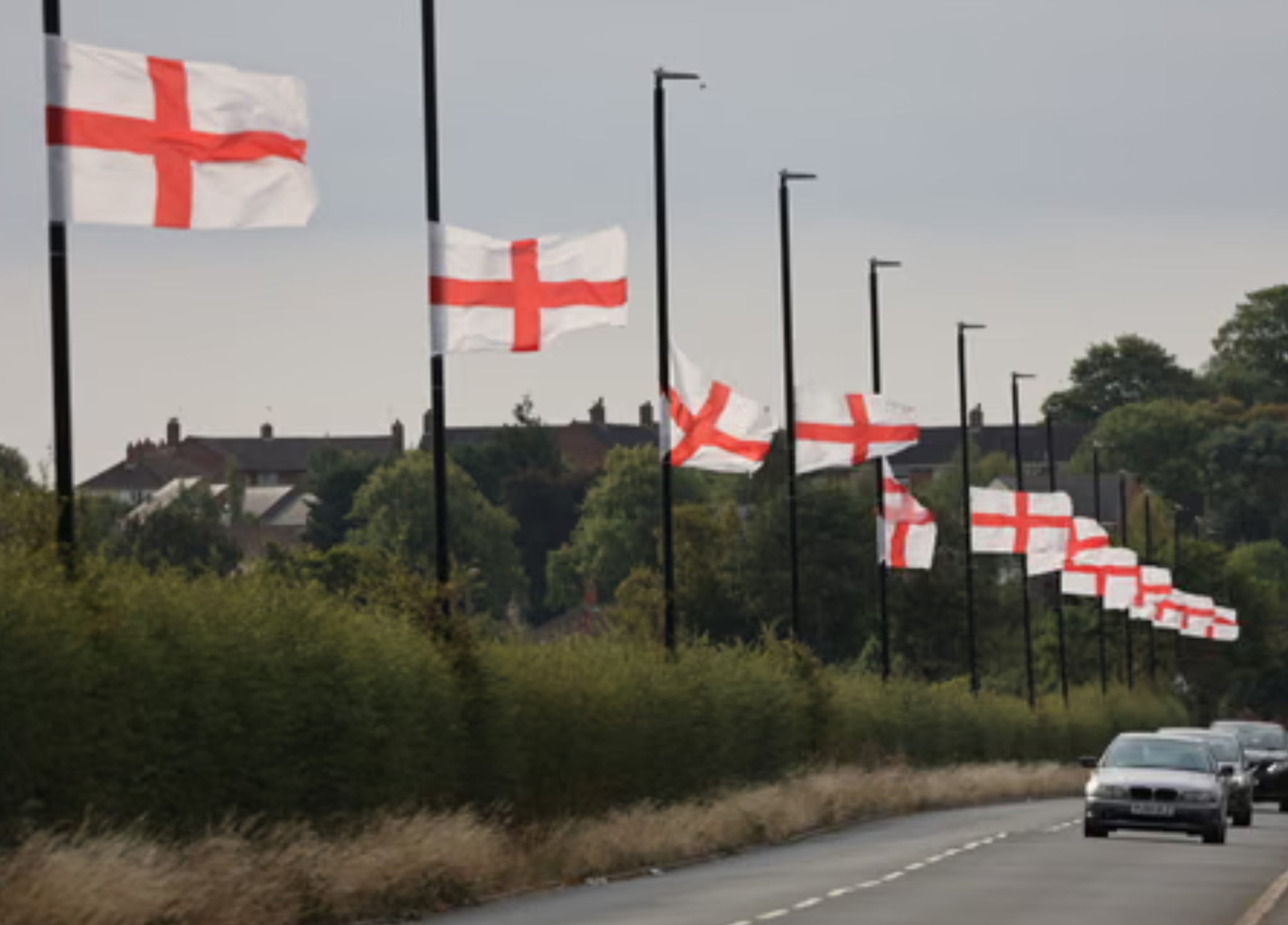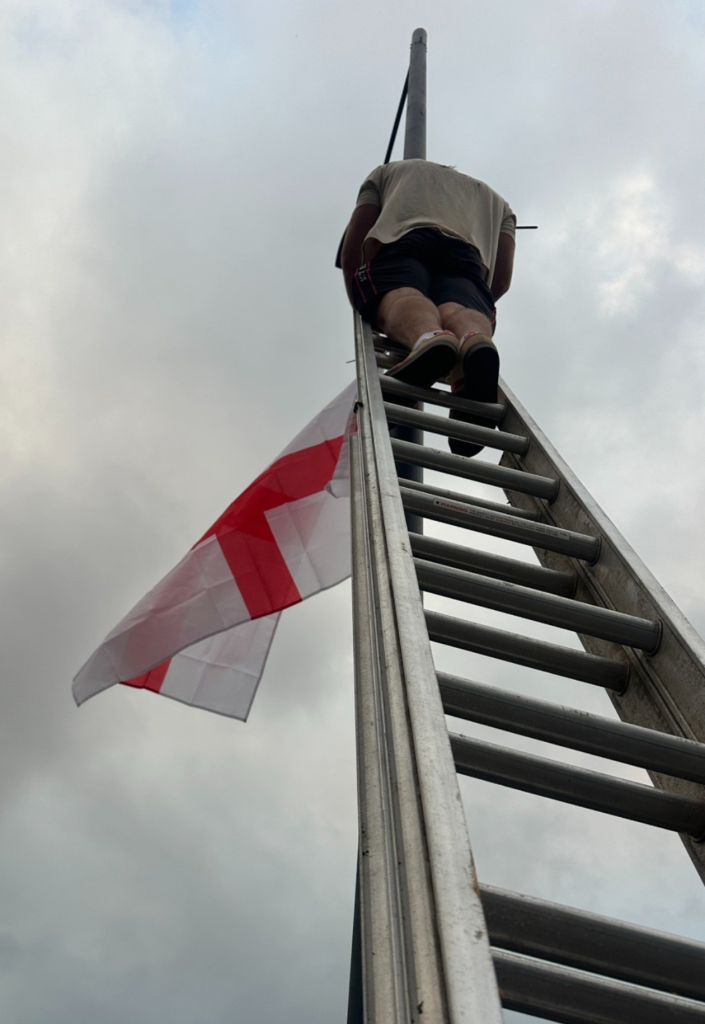
In recent months, the Operation Raise the Colours campaign has led to a noticeable increase in flags being attached to street lighting columns and other highway structures across the United Kingdom. While much of the public debate has centred on the social and political aspects of the movement, at Electrical Testing Ltd (ETL) we have focused solely on the structural question: does the addition of a small flag or banner create a structural risk to the lighting column?
Our Approach
ETL carried out a sample of structural calculations to BS EN 40, the British and European Standard governing the design and verification of lighting columns and similar structures. Using anonymised data from a range of typical UK columns, our engineers modelled the effect of adding a 2 metre by 1 metre fabric flag with an estimated wet weight of 1 kilogram (approximately 170 grams dry) mounted at 4.5 metres above ground. A conservative solidity factor of 0.28 was used to reflect the aerodynamic drag of a flag when wind-loaded.

Results
All structures in our sample passed the BS EN 40 design check. Even under adverse wind conditions and assuming existing attachments remained in place, the addition of a single lightweight flag did not cause an increase in stress levels sufficient to compromise structural integrity or stability.
In simple terms, a small flag mounted at normal height presents no meaningful structural concern, provided that:
- it is securely fixed below the bracket joint
- it is not combined with other large or rigid attachments such as heavy signage or decorations
- the column itself is in sound condition and subject to regular inspection
A Note on Wet Conditions
Our calculations assumed a conservative wet weight to represent the heaviest realistic condition. However, in practice, a wet flag typically clings to the column and becomes limp, reducing its effective wind area and drag. In other words, a heavier, water-logged flag is actually less likely to exert any significant additional force on the column than a dry, freely flapping one.
Important Caveats
The standard assessment assumes:
- adequate foundations and no excessive corrosion
- the flag is of light fabric construction
- the attachment method does not damage the column or its protective coating
Where columns show significant corrosion, denting or modification, further checks should always be undertaken before any attachment is made.
Summary
ETL’s analysis demonstrates that, from a purely engineering standpoint, the structural loading introduced by a typical small fabric flag is negligible when assessed in accordance with BS EN 40. Safety concerns surrounding such installations are therefore more likely to relate to fixing methods, maintenance access or unauthorised use of the highway, rather than the column’s ability to withstand the load itself.
At Electrical Testing Ltd we remain committed to evidence-based analysis and encourage all parties, whether local authorities, community groups or contractors, to ensure any attachments to street furniture are made safely, lawfully and in a manner that respects both the structure and its surroundings.


